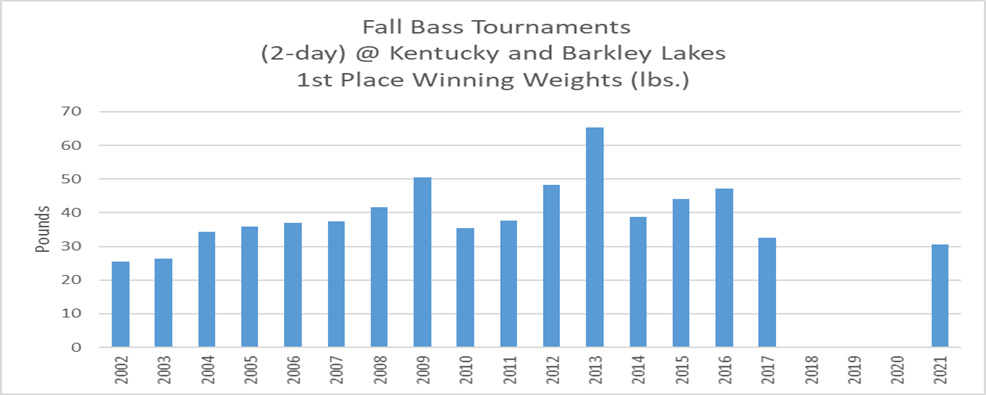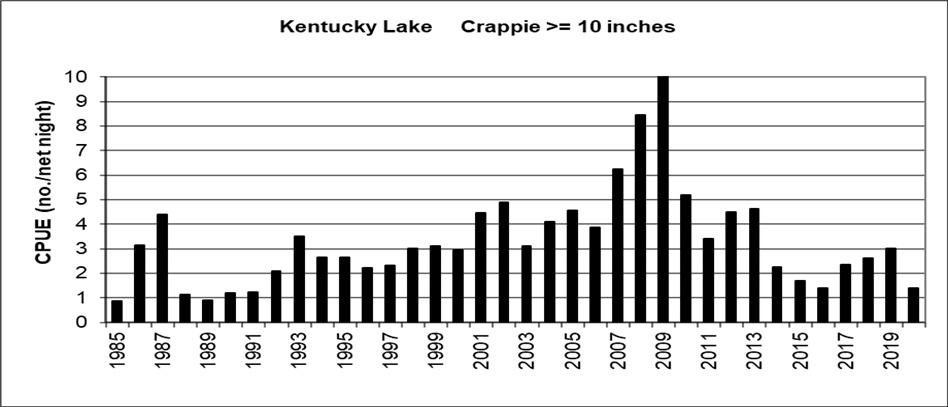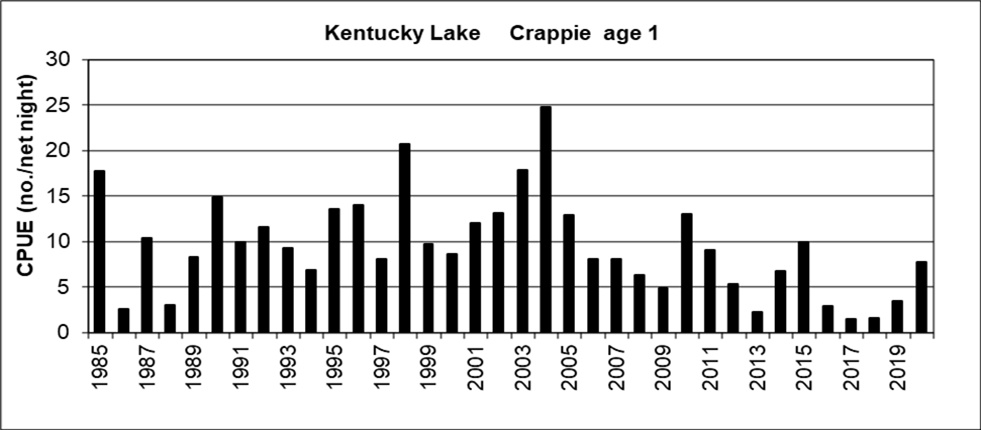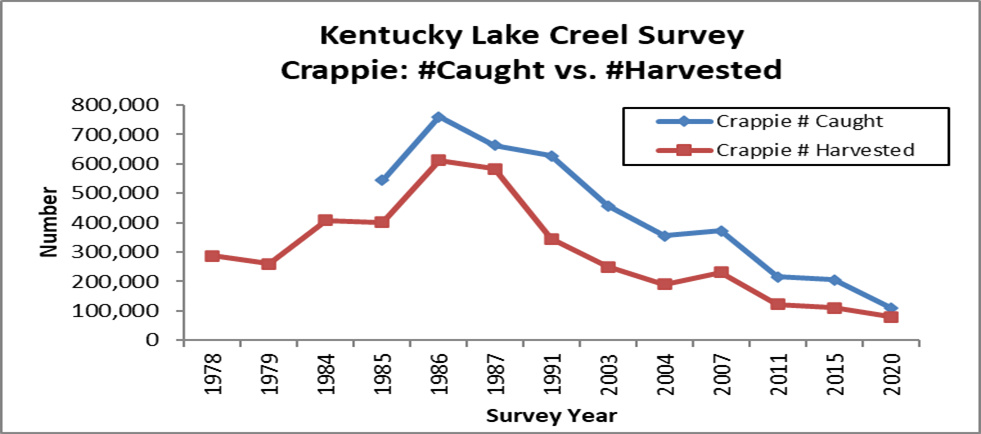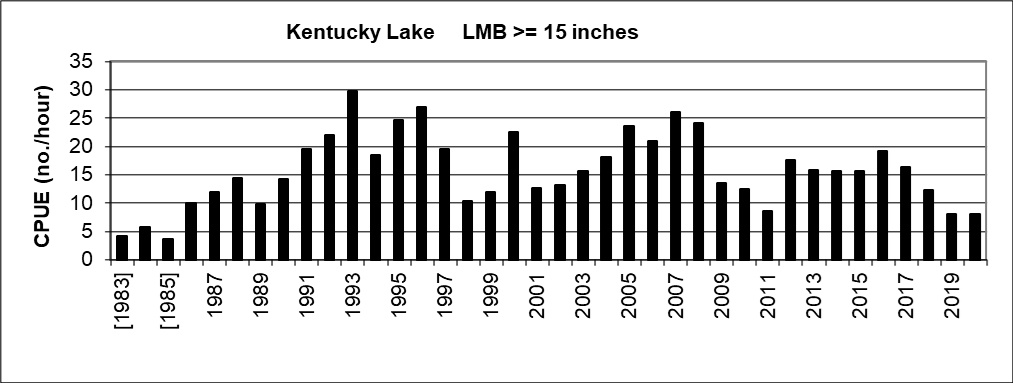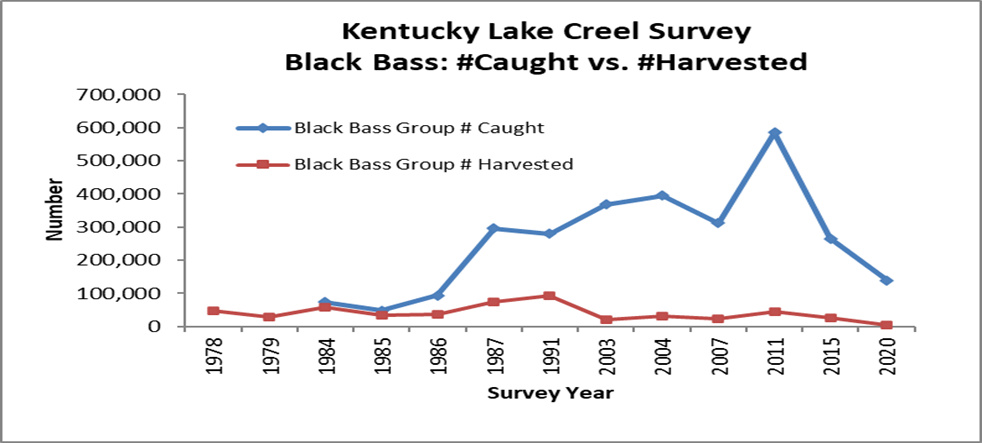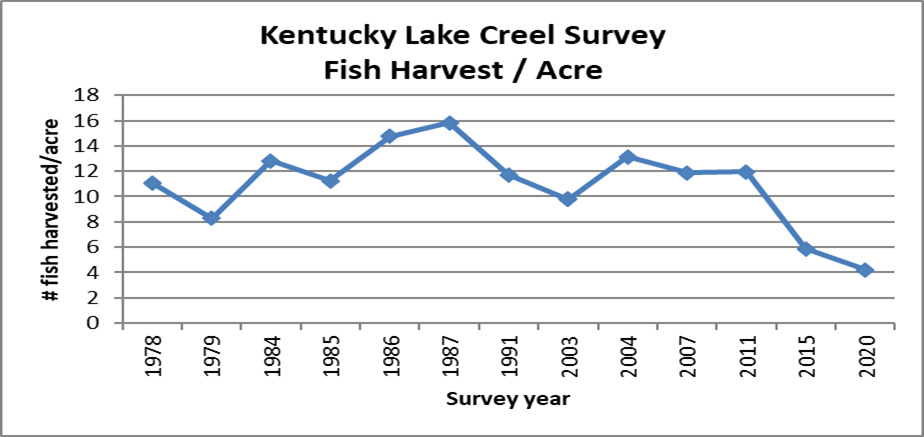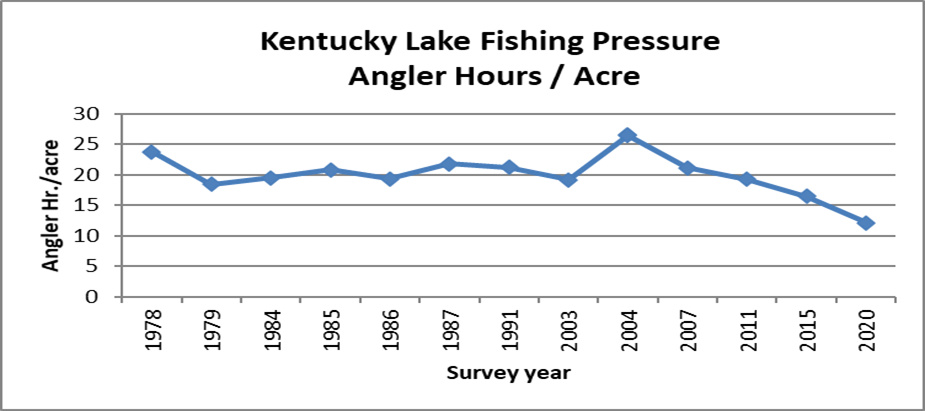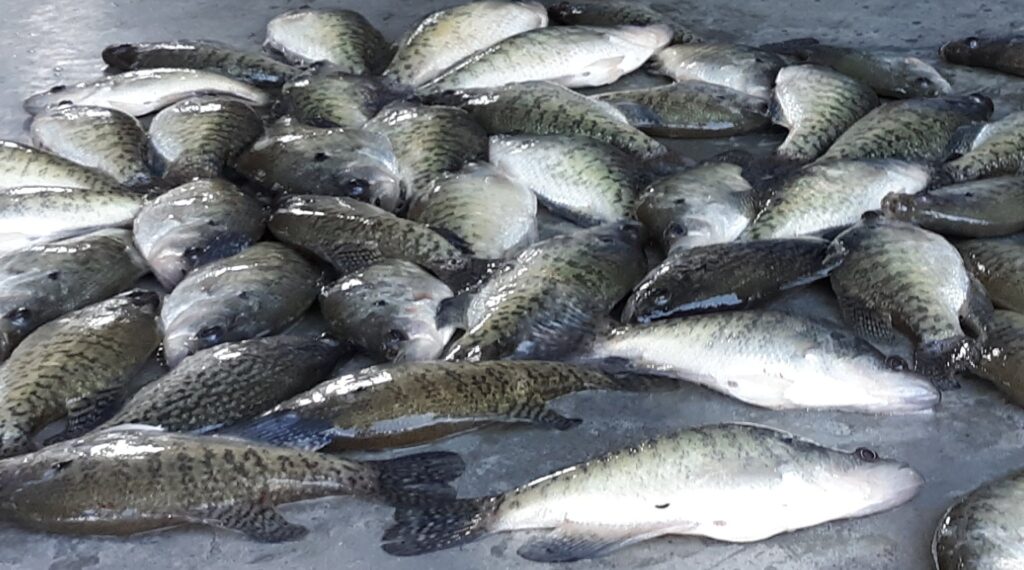If fishing is part of your next visit to Kentucky Lake, consider some history of the sport fisheries. Understanding the trends in the fish populations might improve your fishing, or at least give you something to blame a poor catch on.
Thanks to Kentucky Department of Fish & Wildlife for the data. Some anglers may question the data based on their personal fishing. I am reminded of a three year (1996-98) largemouth bass study we did with TVA biologist back in the day.
A small embayment was blocked off for a day, and it was bass anglers fishing verses electrofishing. The anglers got to fish for a few hours and compare their catch to what electrofishing would reveal is really there. The three-year average of bass caught per hour by electrofishing boat was 26.2 (bass per hour) and 0.05 for angler.
Fishing pressure on the lake is not only dictated by fishing success.
One thing that anglers should recall is how regulations and angler attitude affects harvest. From 1978-1983 the creel limit for largemouth bass was 10 fish daily with a 12-inch minimum size limit.
From 1984-1993 the length limit changed to a 14”, with one under size and a 10 fish creel. From 1993 to 1997 the length limit stayed the same, but daily creel limit was reduced to 6. It was not until 1997, the minimum length limit was increase to 15”.
It was not until the 1970’s when Ray Scott (B.A.S.S) began to evangelize the religion of “catch and release”. The 2020 creel data suggest only about 6% of the legal-size largemouth bass caught, were harvested.
The springtime electrofishing collection (see graphs below) of largemouth bass (pre-spawn) less than 8” was indictive of the previous years spawn. Since it takes about 5 years for a bass to reach 15 inches, the catch rate of the smaller bass could be used to help predict future populations, which should equate to anglers catch rates. “Should”!?
So, if the math is right, looking at the graph, the high catch of age 1 (< 8”) in 2017 should transfer to a higher number of largemouth bass > 15″ collected in 2022.
Loss of shallow water fish habitat, primarily button ball bushes and water willow, explain long term decline in crappie. Water level changes in the 1980’s (extension of summer pool till July) began the demise of this critical habitat. Data from standardized sampling over the years, reveal many ups and down in the crappie populations.
Most of these undulations can be linked to water level fluctuations and wintertime water flow through the reservoir. But then throw in the period of the late 80’s to mid-90’s where drought conditions lead to clear water and vegetation, the once dominated white crappie fishery began to change, and more black crappie were seen in sampling and angler creel data.
Data from standardized crappie trap netting. Age 1 crappie are typically 5″-7” and were used as a good predictor of future year class strength. It takes about 3 years for a crappie to reach 10″.
Looking at the graph of crappie trap netting data for crappie > 10″ collected verses anglers, most might say crappie fishing has declined. But that is relative to how far you remember back. The sampling data reveals current numbers similar to 30 years ago. Also, you have to throw some regulation changes during the last 40 years.
Prior to 1988, the daily limit for crappie was 60 fish with no size limit. It was not till 1989 that limit was drop to 30, then in 1991 the minimum size limit of 10” was imposed. In 2008, a reduction in daily creel took the limit to 20.
Bass tournament data is also important. Some may say bass fish success has declined, again that is relevant to how far you remember back. Thirty pounds to win a fall tournament is similar (actually better) to results of 2002-2003 tournaments.
But I do recall, tournament data back into the 90’s, (during those weedy years) topped 50 pounds to win a tournament.
Most of the data present was collected during my employment with the Kentucky Department of Fish & Wildlife and more recent data was taken from annual reports that can be found here on the Department’s website. You can find more specific lake data from their website here as well as fishing reports here.
I did not mention the ever-controversial non-native carp in the lake, which showed up in our sampling in about 2006-2007. Commercial anglers likely found them a few years earlier. I saw my first one on the Mississippi River in the late 1990’s. Yes, they have changed the face of sportfish. Yes, they have had impacts upon the sportfish populations.
However, these sportfish populations had their ups and downs well before the carp came along. Droughts, floods, clear water, muddy water, vegetation, no vegetation, water level fluctuations, loss of shoreline habitat, siltation… all have played their part in the ever-evolving fishery at Kentucky Lake.
Just like going on any trip or vacation, planning and learning should be part of the process. If you have never fished Kentucky Lake, or have visited a few times, but had poor fishing success, I strongly encourage you to seek a fishing guide.
What color crappie jig that worked last year may not this year. Things change and a one-day guide can point you in the right direction, which leads to better (more enjoyable) fishing the rest of your stay.
Likely, the best $300ish dollars of your weeklong vacation you can spend if fishing is part of the visit.
Paul Rister
